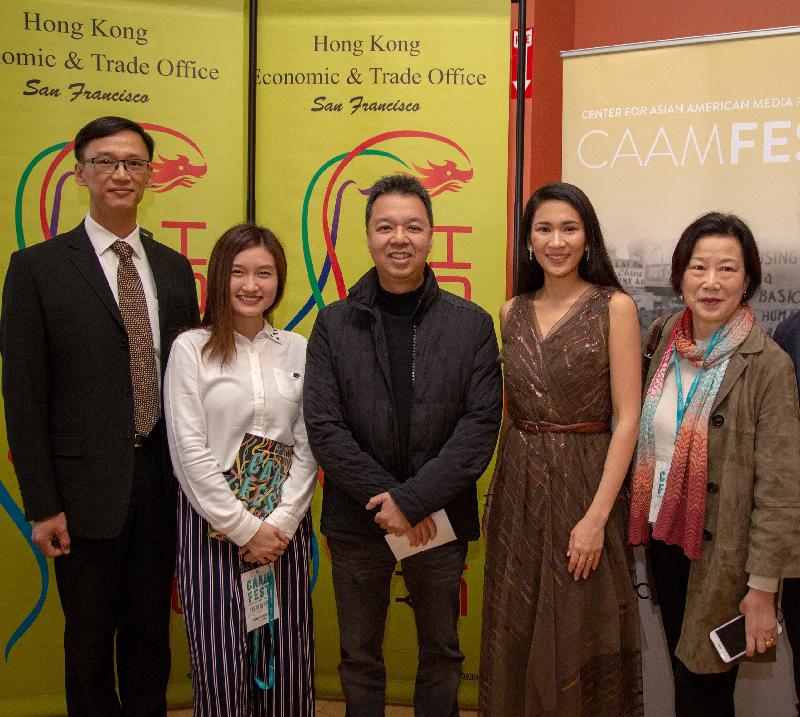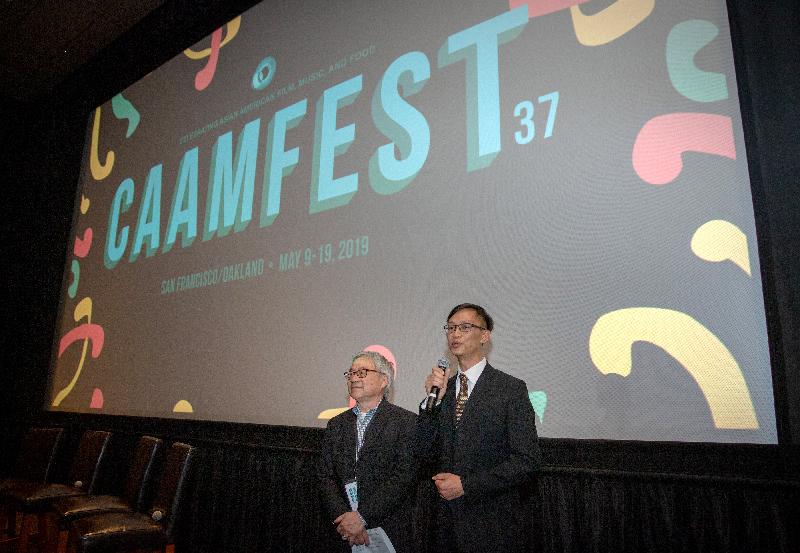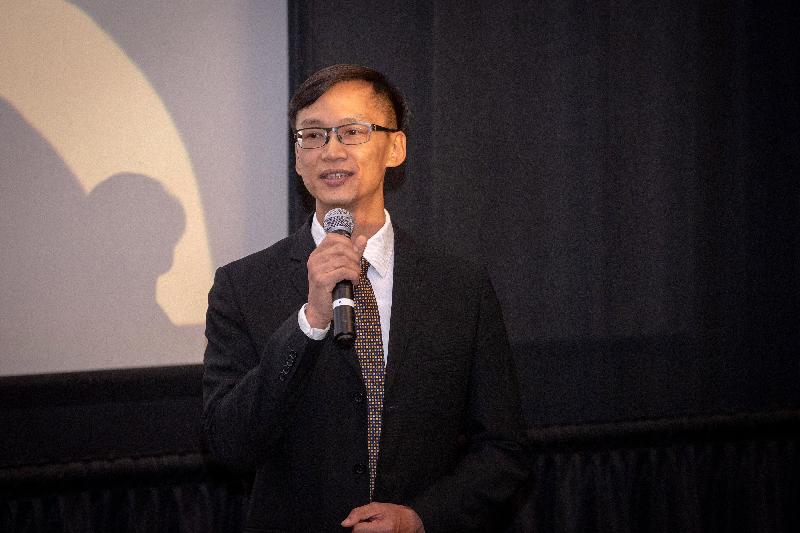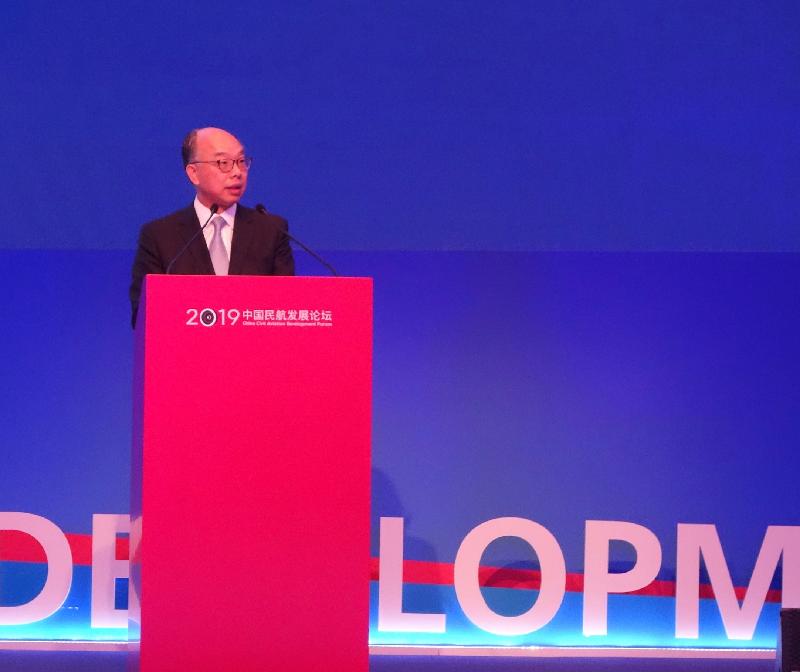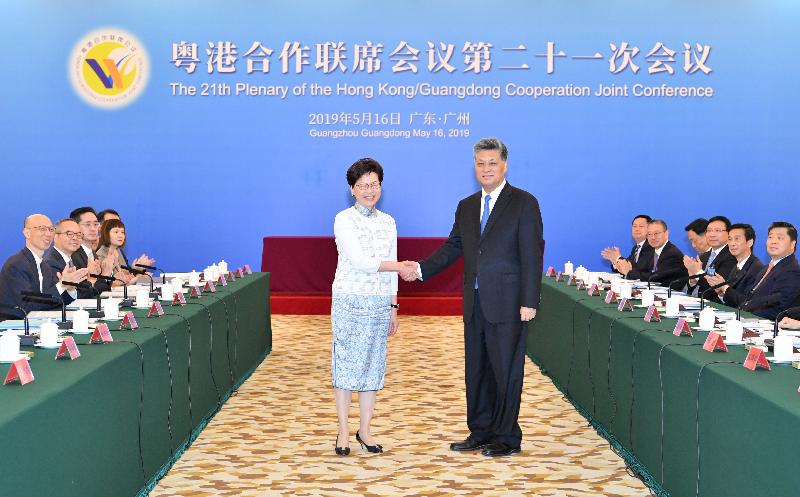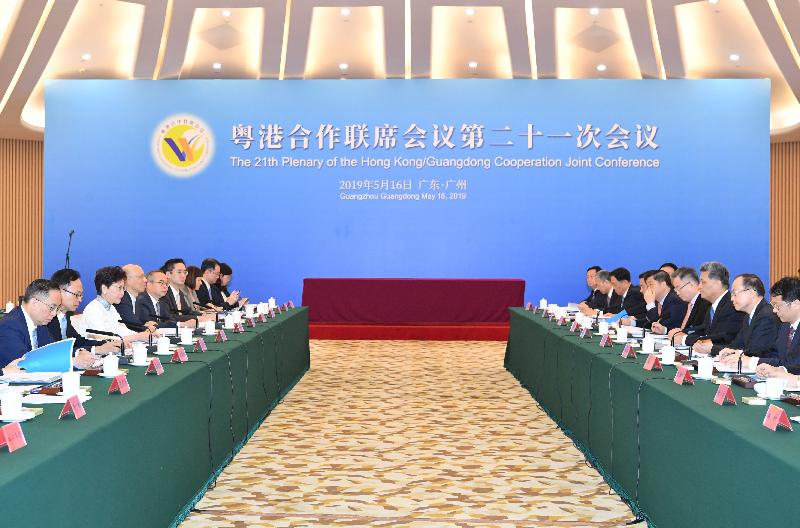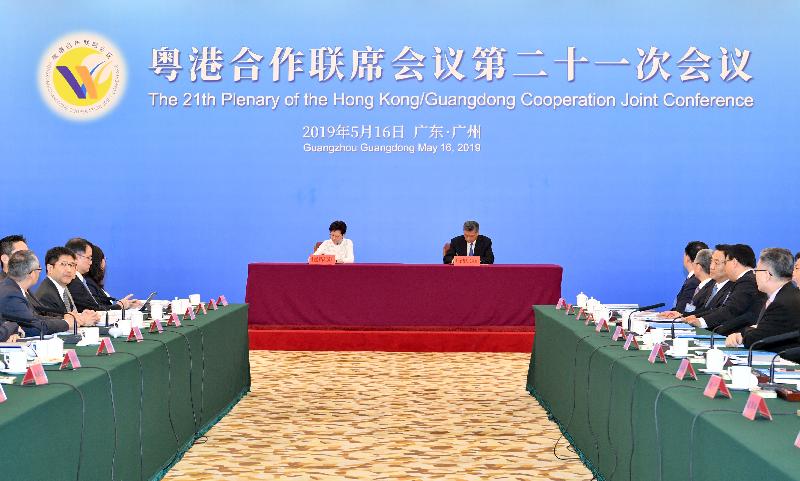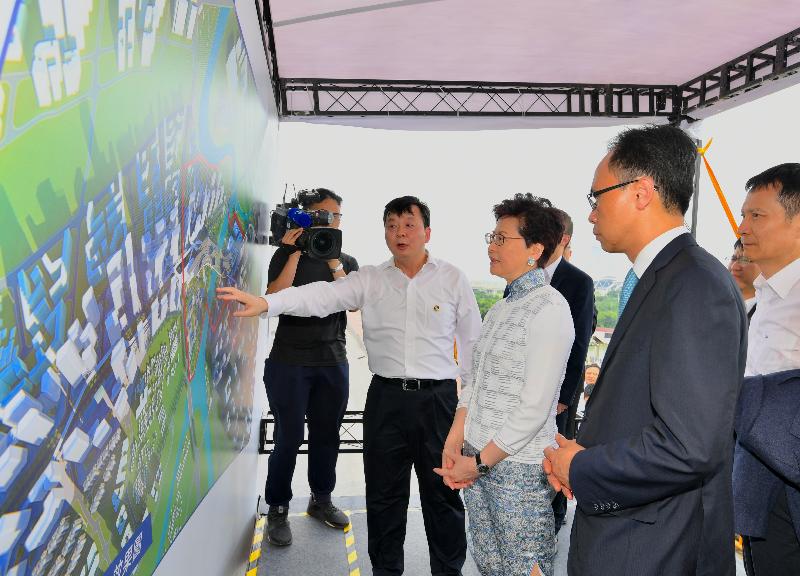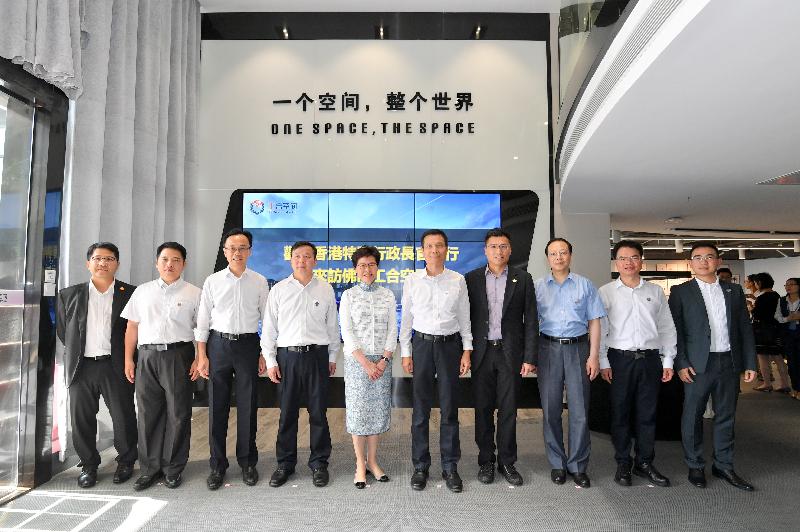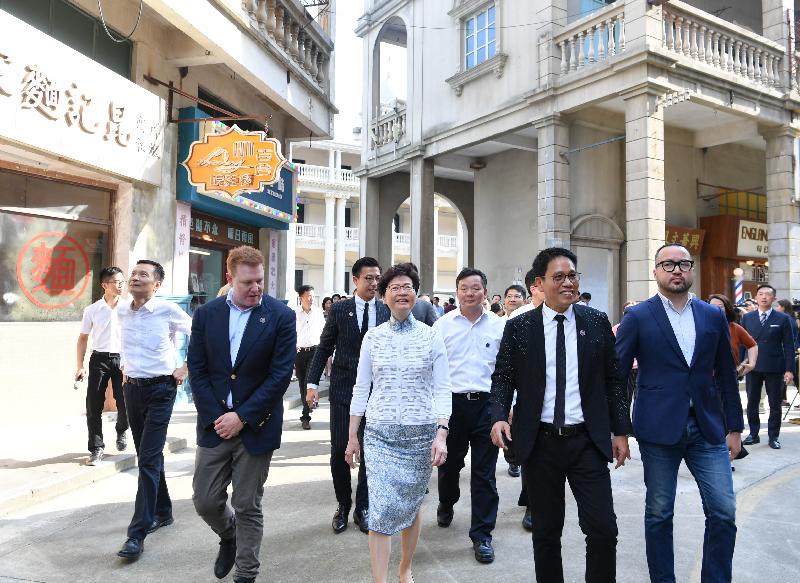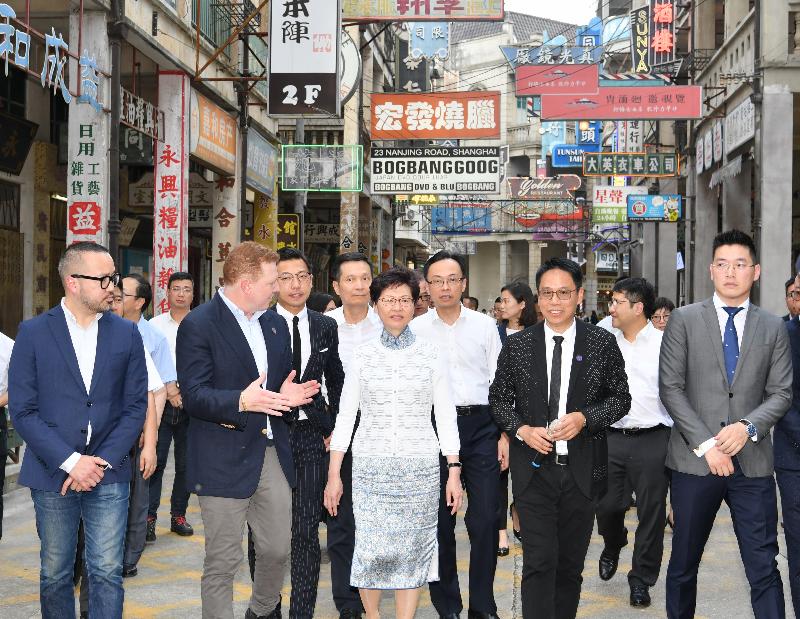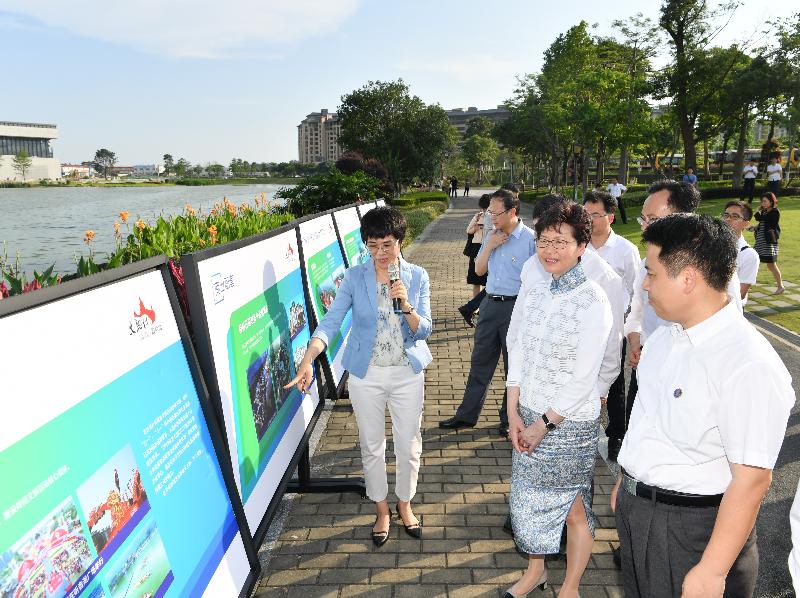The Chief Executive of the Hong Kong Special Administrative Region (HKSAR), Mrs Carrie Lam, and the Governor of Guangdong Province, Mr Ma Xingrui, leading the delegations of the HKSAR and Guangdong Province respectively, co-chaired the 21st Plenary of the Hong Kong/Guangdong Co-operation Joint Conference in Guangzhou today (May 16).
The Chief Executive said, “This being the first plenary meeting held after the promulgation of the Outline Development Plan for the Guangdong-Hong Kong-Macao Greater Bay Area (Outline Development Plan), Governor Ma and I have set out clear directions and goals on the implementation of the Outline Development Plan and further collaboration between Hong Kong and Guangdong. I am delighted to see there are nine fruitful outcomes brought about by the joint efforts of both sides to strive for policy innovation and breakthrough under principles of complementarity and mutual benefits.”
These outcomes include:
- the signing of 2019 Work Plan of the Framework Agreement on Hong Kong/Guangdong Co-operation;
- the supply of part of the marine sand by Guangdong for the reclamation works of the Three-Runway System (3RS) of Hong Kong International Airport;
- presenting a plaque in recognition of the first batch of 10 entrepreneurial bases in the Guangdong-Hong Kong-Macao Greater Bay Area (Greater Bay Area) at a presentation ceremony;
- Guangdong Province will announce, in the near future, details to implement the policy of allowing tertiary institutions and scientific research institutions in Hong Kong and Macao to apply for research funding granted by the Guangdong Province;
- the extension of the Single E-Lock Scheme (SELS) to Zhongshan, so that clearance points under the SELS would cover all nine Mainland cities of the Greater Bay Area;
- further relaxing the accessibility policy of the Hong Kong-Zhuhai-Macao Bridge (HZMB), with organisations such as business associations, universities and scientific research institutions being the priority group of study for granting of quota;
- Guangdong Province is studying and formulating the details on allowing the open recruitment of Hong Kong and Macao residents by public institutions, which is expected to be issued in the second half of this year;
- jointly organising the first Greater Bay Area Culture & Arts Festival; and
- jointly organising events on innovation and technology (I&T).
At the meeting, both sides reached consensus on a range of areas of co-operation, and signed the 2019 Work Plan of the Framework Agreement on Hong Kong/Guangdong Co-operation, content of which is at annex. The Work Plan covers nine areas, namely cross-boundary infrastructure development and clearance facilitation; jointly developing an international innovation and technology hub; fostering co-operation in modern service industries; taking forward exchanges and co-operation in education, talents and youth; developing an internationalised business environment; jointly developing a quality living circle; jointly participating in the Belt and Road Initiative; taking forward the development of key co-operation platforms; and arrangement of a mechanism. Regarding the respective key areas of co-operation, the progress made and the directions for future co-operation are set out below:
Guangdong-Hong Kong-Macao Greater Bay Area
The HKSAR Government and the Guangdong Provincial Government have been taking forward the development of the Greater Bay Area proactively. Concerning the eight policy measures facilitating people to develop in the Greater Bay Area promulgated after the second plenary meeting of the Leading Group for the Development of the Guangdong-Hong Kong-Macao Greater Bay Area on March 1, the HKSAR Government was glad to note that the following have been implemented: encouraging innovation and entrepreneurship in the nine Mainland cities of the Greater Bay Area by the youth of Hong Kong and Macao; announcing details about the policy allowing tertiary institutions and scientific research institutions in Hong Kong and Macao to apply for research funding granted by Guangdong Province in the near future; expanding the implementation scope of the connection with the Speedy Customs Clearance between Customs administrations (also known as the SELS); and formulating the detailed measure to enable the open recruitment of Hong Kong and Macao residents by public institutions in the Guangdong Province. As for the remaining policies, including promulgating the definition of high-end talents and talents in short supply in the provision of tax relief by municipal governments to non-Mainland (including Hong Kong) talents by offsetting the tax differential between the two places, introducing immigration facilitation reform pilots schemes in the Greater Bay Area, and facilitating vehicles from Hong Kong and Macao entering and exiting Mainland ports, it was agreed that the implementation be expedited.
The heads of governments of Guangdong, Hong Kong and Macao paid joint visits to Paris and Tokyo in June 2018 and April this year respectively, with a view to promoting the development of the Greater Bay Area to overseas countries. Very positive responses were received. In future, Hong Kong and Guangdong will continue to utilise Hong Kong’s international connections and networks, organise similar symposiums, conduct overseas promotion on the enormous opportunities and advantages brought about by the Greater Bay Area, and attract capital and talents to the Greater Bay Area.
Innovation and Technology
To develop the Greater Bay Area into an international innovation and technology hub, both sides have launched measures in support of I&T co-operation between Hong Kong and the Mainland. The Department of Science and Technology and the Department of Finance of Guangdong Province have announced a new policy allowing tertiary institutions and scientific research institutions in Hong Kong and Macao to apply for research funding granted by Guangdong Province and to use them across the boundary in Hong Kong. This new policy, coupled with the Guangdong-Hong Kong Technology Co-operation Funding Scheme which has been in effective operation, will enable research institutions of both places to have access to more resources to carry out research and development work and develop closer co-operation.
Moreover, the HKSAR Government will organise InnoFest 2019 in October and November this year. A series of events will be launched to deepen the understanding of our country and Hong Kong’s development and achievements in I&T in society. The HKSAR Government will invite relevant parties in Guangdong to participate in InnoFest 2019 and consider organising I&T events in Guangdong during the same period, with a view to strengthening the synergy of I&T co-operation in the Greater Bay Area. The Guangdong Government will proactively support this initiative.
Youth Development
Both sides agreed that youth development, including youth entrepreneurship, exchange and internship, would be a focus of collaboration. On youth entrepreneurship, the HKSAR Government introduced in March this year two new funding schemes under the Youth Development Fund, namely the Funding Scheme for Youth Entrepreneurship in the Greater Bay Area and the Funding Scheme for Experiential Programmes at Innovation and Entrepreneurial Bases in the Greater Bay Area. After the meeting, a ceremony was organised by both sides to present a plaque to the first batch of 10 entrepreneurial bases to further promote youth innovation and entrepreneurship in the Greater Bay Area. Both sides hope that this batch of entrepreneurial bases will take the lead in providing incubation services and quality support that suit the need of the youth of Hong Kong in starting up their business.
The HKSAR Government also expects that, with the support of both governments of Guangdong and HKSAR, an Alliance for Youth Innovation and Entrepreneurial Bases will be established in the Greater Bay Area within 2020. The Alliance will be premised on non-governmental organisations and youth entrepreneurial bases in the Greater Bay Area to serve as a one-stop information, publicity and exchange platform in order to better support innovation and entrepreneurship by the youth of Hong Kong in the Greater Bay Area.
On youth internship, in 2019-20, the Home Affairs Bureau will provide funding of around $120 million through the Funding Scheme for Youth Internship in the Mainland (the Funding Scheme) to support 149 youth internship projects in the Mainland. It is expected that about 3 800 young people will benefit from the scheme. In particular, the Guangdong-Hong Kong Internship Programme under the Funding Scheme has been extended to cover all nine Mainland cities of the Greater Bay Area this year, benefiting around 1 000 Hong Kong young people.
Clearance Facilitation
In respect of the expansion of the SELS to the nine Mainland cities in the Greater Bay Area, the HKSAR Government welcomes the setting up of a clearance point at Zhongshan Bonded Logistics Centre by the Guangdong Customs. The new clearance point has achieved readiness for SELS operation with Hong Kong Customs and for use by the industry. Accordingly, the number of clearance points in the Guangdong Province has been increased to 52, covering all nine Mainland cities of the Greater Bay Area.
Co-operation in Professional Services
For legal services, 11 partnership associations between Hong Kong and Mainland law firms have been set up in Guangdong Province, with 33 Hong Kong lawyers being seconded to the partnership associations. Hong Kong barristers and solicitors have also been retained as legal consultants by Guangdong law firms. The Ministry of Justice and the Department of Justice (DoJ) signed a record of meeting this January, agreeing in principle to further the liberalisation measures relevant to partnership associations. Starting from this March, the geographical scope of setting up partnership associations by Hong Kong and Mainland law firms has been extended from Guangzhou, Shenzhen and Zhuhai to the entire Mainland. The DoJ will continue to liaise with the legal sector and discuss with the relevant Mainland authorities to implement and further enhance the liberalisation measures under the framework of the Mainland and Hong Kong Closer Economic Partnership Arrangement (CEPA), as well as to continue to explore the opportunities for the sector to provide legal services in Guangdong Province. The DoJ will also continue to liaise with the Central Government, relevant authorities of Guangdong Province and concerned stakeholders in Hong Kong to explore the introduction of pilot based initiatives by making use of the Greater Bay Area competitiveness, including allowing parties to civil and commercial cases in Guangdong Province to choose Hong Kong law as governing law and Hong Kong as a place of arbitration outside the Mainland, expanding the scope of practice of Hong Kong legal practitioners in the Greater Bay Area, study the setting up of the Greater Bay Area Mediation Centre, and more.
On construction and related engineering services, the Development Bureau will continue to collaborate with Mainland authorities for the arrangements on the mutual recognition of professional qualifications and the deepening of co-operation between Hong Kong and Qianhai, Nansha and Hengqin in accordance with the Agreement on Economic and Technical Co-operation under CEPA.
Environmental Protection
Guangdong and Hong Kong will continue with their exchange on the management of marine refuse and formulate a co-operation plan for the coming year, which will include reviewing the operation of the Notification and Alert System on Marine Refuse and the Hong Kong-Guangdong Cross Boundary Notification Mechanism on Marine Refuse; enriching and consummating the co-operation mechanism for handling cross-boundary marine environmental incidents; and exchanging and sharing experience in different aspects.
To improve regional air quality, both sides will continue to implement various measures to reduce emissions. On January 1, the HKSAR Government implemented a new regulation which requires vessels to use low sulphur fuel within the waters of Hong Kong to reduce emissions and dovetail with the implementation of marine emission control areas in the Mainland. In recent years, both sides have also stepped up efforts to promote cleaner production, thereby contributing to improving the quality of the regional environment.
To enhance the regional ecological environment, both sides will continue to explore the proposed development of a linked ecological corridor and collaborated conservation areas, promote the protection of coastal wetlands including mangroves in the Pearl River Estuary, as well as strengthen the management of and exchanges on conservation areas in the two places.
Cross-boundary Infrastructure
The Hong Kong Section of the Guangzhou-Shenzhen-Hong Kong Express Rail Link (XRL) has been operating smoothly since its commissioning. The MTR Corporation Limited continues to make improvements to the operating arrangements. Passengers are also getting used to using the XRL as a cross-boundary transport mode. By the end of April this year, the average daily patronage for the XRL was over 54 000.
Since the commissioning of the HZMB in October 2018, the operation has generally been smooth and the vehicular flow has been gradually increasing. The HKSAR Government has been discussing with the governments of Guangdong and Macao to gradually increase in an orderly manner the quota for cross-boundary vehicles to use the HZMB, to tie in with the development of the Greater Bay Area and to further utilise the HZMB. At present, the quota for Hong Kong/Guangdong cross-boundary private cars (for Hong Kong cross-boundary private cars) using the HZMB has reached 14 500. Separately, a quota of 33 000 Hong Kong cross-boundary private cars using the other four land boundary control points connecting to Shenzhen is allowed, on a trial basis for two years, to use the HZMB for travelling between Hong Kong and Zhuhai without additional procedures. The three governments will continue to increase the quotas gradually.
The Hong Kong International Airport has an important strategic function in the development of a world-class airport cluster in the Greater Bay Area. The Outline Development Plan gave clear support to the construction of the 3RS. The construction of the 3RS has been smooth and received the Gaungdong Government’s support. The Guangdong Government has been supportive of the 3RS project and will supply part of the marine sand for the reclamation works to facilitate the smooth implementation of this large-scale infrastructural project which will benefit Hong Kong, the Greater Bay Area as well as the entire country. After the full operation of the 3RS, the capacity of Hong Kong in handling passenger and cargo throughput by air will be enhanced, further strengthening connections between our country’s and the world’s flight destinations.
The Heung Yuen Wai Boundary Control Point project is in progress. The new land port will link eastern Hong Kong with eastern Shenzhen, such as Longgang District. By then, the anticipated average travelling time between Tai Po in Hong Kong and Longgang in Shenzhen would be reduced from over 50 minutes to about 30 minutes, facilitating smooth and efficient people and cargo flows across the boundary and enhancing the “one-hour living circle” in the Greater Bay Area, which are of strategic importance to Hong Kong’s long-term economic development. The HKSAR Government is striving to complete the construction of this new boundary control point this year for early commissioning.
Talent Development
The HKSAR Government welcomes the Guangdong Province to actively take forward the promulgation of details of open recruitment of Hong Kong and Macao residents by public institutions. The Guangdong Province is formulating the relevant measure, which is expected to be announced in the second half of this year.
Culture
Guangdong, Hong Kong and Macao will co-organise the first Greater Bay Area Culture & Arts Festival (the Festival) in June this year. During the Festival, the three places will present different arts and cultural programmes in the Greater Bay Area.
Education Co-operation
On education co-operation, the HKSAR Government supports post-secondary institutions of Hong Kong to offer education services in the Greater Bay Area and to give full play to the characteristics of Hong Kong’s higher education sector and their strength in terms of internationalisation. This will help develop the Greater Bay Area as an international education base as well as open up collaborative innovation opportunities for students in Hong Kong and Guangdong. Following the establishment of Beijing Normal University-Hong Kong Baptist University United International College by the Hong Kong Baptist University and Beijing Normal University in Zhuhai in 2005, and the establishment of Chinese University of Hong Kong (Shenzhen) by the Chinese University of Hong Kong and Shenzhen University in 2014, the Hong Kong University of Science and Technology is also in active preparation for its new campus in Guangzhou. The target is to commence operation in September 2021.
With the development of the Greater Bay Area, it is expected that more Hong Kong residents will work and stay there. To cater for the increasing educational needs of their children, the Education Bureau is exploring the feasibility of setting up schools offering basic education with Hong Kong curriculum or additionally an international curriculum by Hong Kong school sponsoring bodies in cities in the Greater Bay Area. This will offer additional choices to Hong Kong residents or foreigners living in the Greater Bay Area.
Creative Industries
The development of the Greater Bay Area offers immense opportunities for creative industries in Hong Kong. Regarding the film sector, relevant Central authorities have agreed to launch five measures to further facilitate entry of the sector into the Mainland market, thereby providing more development opportunities to the industry and furthering the mutual growth of the sector in the two places. Furthermore, the “Zetta Bridge, Qianhai Shenzhen” design innovation hub actively taken forward by the Hong Kong Federation of Design Associations is scheduled for inauguration in 2019-20. The HKSAR Government will continue to sponsor suitable projects through CreateSmart Initiative to leverage this new platform to foster talent exchange, business matching and trade collaborations, as well as support Hong Kong’s young talent and start-ups to develop their career/business in the Greater Bay Area.
Other Areas
Apart from the above, Hong Kong and Guangdong have also made steady progress in other areas of co-operation such as CEPA, tourism, intellectual property rights, food safety, medical services, and social welfare.
The 21st Plenary
The 21st Plenary was co-chaired by Mrs Lam, and Mr Ma. Officials of the HKSAR Government attending the meeting included the Secretary for Constitutional and Mainland Affairs, Mr Patrick Nip; the Secretary for the Environment, Mr Wong Kam-sing; the Secretary for Innovation and Technology, Mr Nicholas W Yang; the Secretary for Home Affairs, Mr Lau Kong-wah; the Under Secretary for Education, Dr Choi Yuk-lin; the Under Secretary for Commerce and Economic Development, Dr Bernard Chan, and other relevant officials. The Deputy Director of the Hong Kong and Macao Affairs Office of the State Council, Mr Song Zhe, and the Deputy Director of the Liaison Office of the Central People’s Government in the HKSAR, Mr Yang Jian, also attended the meeting as special guests.
read more


